On September 11…
History is often not for the faint of heart. There are hard lessons to be learned and while it may be easier to tuck a few of them into a vault and lock them away forever, neither you nor I can do that.
While there were several “happy” events that took place on this date in history, many others stagger the imagination. They are not by any stretch, pleasant reminders of where we have been, but they are all a part of our history.
This Is Our Story … Yours and Mine.

As tragic as September 11, 2001 was, it does not stand alone
The date of September 11 is truly a date from Hell
==================================================
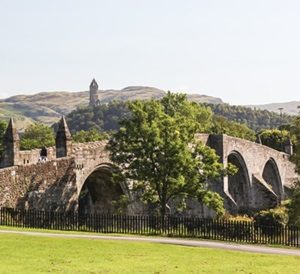
1297 – William Wallace and Andrew Moray led an army of 6,000 Scots to victory over an English Army of 10,000 at the Battle of Stirling Bridge.
The battle was depicted in the film Braveheart, although the battle scene – and the entire movie – was filled with numerous historical errors.
The battle was fought on and near a wooden bridge, not in an open field. Before the English could finish crossing, the Scots attacked. In the frenzy to retreat back over the bridge, the whole thing collapsed into the River Forth. Many of the English drowned while those trapped on the wrong side were slaughtered by the Scots.
The rebuilt bridge (shown above with the Wallace Monument in the background) is approximately 200 feet downstream of the original bridge.
In summary … The events in the film aren’t accurate, the dates aren’t accurate, the characters aren’t accurate, the names aren’t accurate, and the clothes aren’t accurate.
So even though Braveheart was, in director Mel Gibson’s words, “cinematically compelling,” it remains one of the most historically inaccurate movies ever produced.

1609 – Explorer Henry Hudson sailed into New York harbor and discovered Manhattan Island and the river which would bear his name – 392 years to the day before that island would be the site of the worst attack on American soil in history.
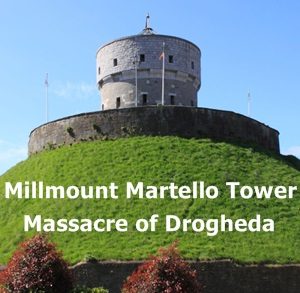
1649 – At the Massacre of Drogheda, Ireland, Oliver Cromwell – Lord Protector of the Commonwealth of England – ordered the deaths of 3,000 English Royalist and Irish Confederate soldiers.
The day before, Cromwell had a letter delivered to Millmount Fort, warning the governor, Sir Arthur Aston, of the consequences if he refused to surrender.
Even though his garrison was critically short of gunpowder and ammunition, Aston did refuse, so on this date, Cromwell’s forces, outnumbering the Irish by a 4-to-1 ratio, crushed the opposition.
In an act of unparalleled savagery and treachery beyond any slaughterhouse, Cromwell’s troops also murdered an estimated 2,000 civilians.
According to British historian John Morrill, the massacre at Drogheda, “was without straightforward parallel in 17th century British or Irish history.”

1683 – 150,000 warriors from the Muslim Ottoman Empire, led by Grand Vizier Merzifonlu Kara Mustafa Pasha, began a 2-day battle at Kahlenberg mountain in Vienna against the Holy Roman Empire (in league with the Polish–Lithuanian Commonwealth) under the command of King John III Sobieski.
The Battle of Vienna was notable for the largest cavalry charge in history – 18,000 Polish horsemen charging down the hills and routing the Ottoman forces – leaving 15,000 Turks dead.

1697 – It was another bad day for the Turks.
The Ottoman army, led by Sultan Mustafa II, was overtaken by the Austrians under Prince Eugene of Savoy as it was crossing the Tisa River near present day Senta, Vojvodina, Serbia.
As his troops were raining down gunfire on the helpless Turks, Eugene mounted an additional assault on the rear flanks of the Turkish army, leaving the Turks hemmed in between the river and Eugene’s army.
More than 10,000 Ottoman troops drowned in the river. Up to 20,000 more soldiers were slaughtered on the battlefield.
The Battle of Zenta was arguably the most ignominious defeat ever inflicted on the Turkish Empire. The threat of Ottoman dominance over Europe was ended forever.

1776 – The Staten Island Peace Conference took place at Billop Manor on Staten Island, NY.
The participants were the British Admiral Lord Richard Howe, and members of the Second Continental Congress – John Adams, Benjamin Franklin, and Edward Rutledge.
The conference, held only days after the British capture of Long Island, lasted just three hours and was a failure. The Americans insisted on recognition of their recently declared independence, and Howe’s limited authority was inadequate to deal with that development.
When Lord Howe stated he could not view the American delegates as anything but British subjects, Adams – never one to hold his tongue – replied, “Your lordship may consider me in what light you please, except that of a British subject.”
Four days after the conference, British troops landed on Manhattan and occupied New York City.

1777 – General Sir William Howe and General Charles Cornwallis launched a full-scale British attack on General George Washington and the Patriot outpost at Brandywine Creek near Chadds Ford, in Delaware County, PA.
A combined 30,000 troops fought at Brandywine, more than any other battle of the American Revolution. It was also the longest single-day battle of the war, with continuous fighting for 11 hours.
Washington’s defeat left Philadelphia vulnerable, and the British captured the city two weeks later.

1792 – While King Louis XVI and his family were imprisoned in the early stages of the French Revolution, a group of thieves broke into the Royal Storehouse and stole most of the Crown Jewels during a five-day looting spree.
While many jewels were later recovered, the 69-carat French Blue was not among them and it disappeared from history.
Aftermath: A blue diamond was recorded in the possession of the London diamond merchant Daniel Eliason in September 1812 – just two days after the 20-year statute of limitations for the theft had expired. The jewel was a “massive blue stone of 45.54 carats.”
Scientific investigation in 2008 confirmed “beyond reasonable doubt” that the Hope Diamond and the French Blue owned by the kings of France were created from the same gemstone.
The mystery of the missing 24 carats has never been solved.
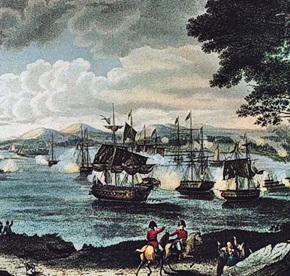
1814 – At the Battle of Plattsburgh (a/k/a Battle of Lake Champlain), British forces were defeated, effectively bringing an end to the War of 1812.
The British, with 9,000 troops available, held a strong manpower advantage over the 3,000 U.S. regulars, but the addition of 2,000 volunteers from the Vermont militia – and 700 more from New York – turned the tide.
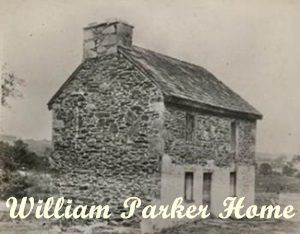
1851 – Maryland planter Edward Gorsuch was shot and killed by African-Americans in Christiana, PA as he tried to take possession of three young men who had escaped from his ownership two years earlier.
Gorsuch had information that his slaves were at William Parker’s farmhouse. Parker – a former slave – had received word that Gorsuch, a federal marshal and others were on their way to his farmhouse.
Both sides were resolute in their determination to prevail: Parker convinced of the immorality of slavery, and Gorsuch confident in the law and his right to own slaves.
There are conflicting stories of why and how the shooting started, but it resulted in the death of Gorsuch and severe wounding of his son Dickinson.
In the days that followed, several groups of vigilantes terrorized African Americans living in Lancaster County in search of participants in the riot. Parker and his family had already fled to Canada, traveling through Rochester, NY, where abolitionist Frederick Douglass helped them obtain passage on a steamer to Toronto.
The law was swift in its response. A grand jury in Lancaster County indicted thirty-eight men on 117 counts of treason – the largest number of Americans ever charged with treason in the history of the United States – including Castner Hanway, one of five white men charged and alleged to be the ringleader.
Following an eighteen-day trial, Hanway was acquitted by a jury after 15 minutes of deliberation.
Lacking witnesses who would testify to their guilt, the grand jury also dropped all of the charges against the other men in custody. In the end, the state courts failed to indict anyone for any crimes associated with the Christiana riot.
If nothing else, what happened in Christiana on that fateful September 11 would one day have a profound effect on the nation.
Edward Gorsuch’s youngest son, Thomas Gorsuch, and his schoolmate – a 13-year old named John Wilkes Booth – swore revenge for his death.
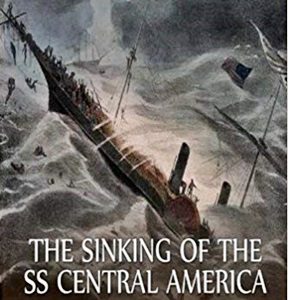
1857 – SS Central America, known as the Ship of Gold, was a 280-foot sidewheel steamer that operated between Central America and the eastern coast of the United States during the 1850s.
On September 9, the ship – with 477 passengers and 101 crew members (and carrying 13-15 tons of gold) – was caught up in a Category 2 hurricane while off the coast of the Carolinas.
By September 11, the 105 mph winds and heavy seas had shredded her sails, she was taking on water, and her boiler was threatening to fail. A leak in one of the seals between the paddle wheel shafts and the ship’s sides sealed its fate.
The SS Central America sank about 160 miles east of Cape Hatteras, NC. 153 survived the sinking but a total of 425 passengers and crew, including Captain William Lewis Herndon, drowned.
Herndon Factoid: Two years after the sinking, Herndon’s daughter Ellen married Chester Alan Arthur, later the 21st President of the United States.
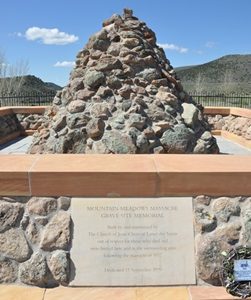
1857 – Approximately 120 men, women and children in a wagon train traveling from Arkansas and Missouri to California were murdered by Mormon militiamen at the Mountain Meadows Massacre in southern Utah.
In the summer of 1857, the Mormons expected an all-out invasion of apocalyptic significance and spent months preparing for a siege. They stockpiled grain and were warned about selling grain to emigrants for use as cattle feed.
They sought to enlist the help of Native American tribes in fighting the “Americans,” encouraging them to steal cattle from emigrant trains, and to join Mormons in fighting the approaching army.
Intending to give the appearance of Native American aggression, the militia’s plan was to arm a band of Southern Paiute Native Americans and persuade them to join with a larger party of their own militiamen – disguised as Native Americans – in an attack.
During the militia’s first assault on the wagon train (Sept. 7) the emigrants fought back, and a five-day siege ensued.
The wagon train was running low on water and provisions and allowed several approaching members of the militia – who carried a white flag – to enter their camp. The militia members assured the emigrants they were protected and escorted them from the hasty fortification.
After walking a distance from the camp, the militiamen, with the help of auxiliary forces hiding nearby, attacked the travelers and killed all of them they thought were old enough to be potential witnesses to report the attack.
Seventeen children, all younger than seven, were the only travelers spared.
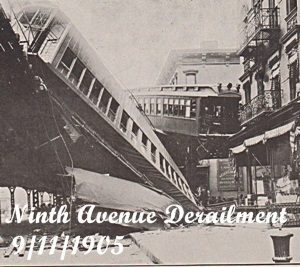
1905 – The Ninth Avenue derailment – the worst accident in the history of the New York City elevated railways – resulted in 13 deaths and 48 serious injuries.
During the morning rush hour, a Ninth Avenue train following a Sixth Avenue train was mistakenly switched onto a curve. The train was traveling at 30 mph when it entered the sharp curve, (9 mph was the company-mandated limit).
The motorman, Paul Kelly, realizing the error, braked quickly. The lead car remained on the tracks but the second was thrown off the trestle and down to the street, coming to rest with one end on the ground and the other across the third rail on the trestle, which sparked an electrical fire.
The roof was torn off and some passengers were crushed under the car by a falling truck and motor equipment from the third car, which came to rest hanging off the edge of the trestle against the front of an apartment building, into which some passengers were able to escape through a window.
Kelly was convicted of manslaughter in the second degree for his part in the derailment. He was sentenced to two and a half years at Sing Sing prison.
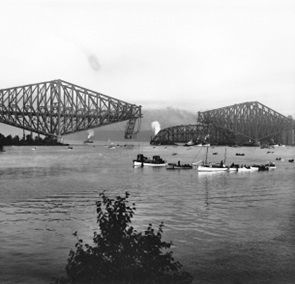
1916 – The Quebec Bridge – a road, rail and pedestrian bridge across the lower Saint Lawrence River between Quebec City and Lévis, Quebec, Canada – collapsed for the second time in nine years.
In 1907, 75 workers were killed and 11 injured when the bridge, the design of which was later determined to be insufficient to support its own weight, completely collapsed.
On September 11, 1916, the center span of the bridge fell into the St. Lawrence River while it was being hoisted into place, killing 13 workers.
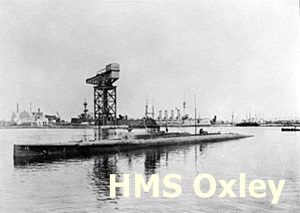
1939 – Lieutenant Commander H.G. Bowerman, Commander of HMS Oxley and Able Seaman Gluckes, a lookout, were rescued at sea by the crew of HMS Triton.
That’s the good news.
The bad news is Oxley had been torpedoed hours earlier by … Triton!
On the evening of September 10, a lookout on the Triton had spotted another vessel off the coast of Norway. After four challenges over several minutes with a box lamp went unanswered, Lieutenant Commander Hugh Patrick de Crecy Steel, Commander of Triton, determined that he was seeing a German U-boat and fired two torpedoes, sinking Oxley and killing 53 members of the crew.
A Board of Enquiry found that Steel had done all he reasonably could in the circumstances, and the first Allied submarine casualty of World War II was due to “friendly fire.”
During the war, the loss of Oxley was attributed to an accidental explosion. After the war, it was explained to have been a collision with Triton.
The truth was not revealed until the 1950s.
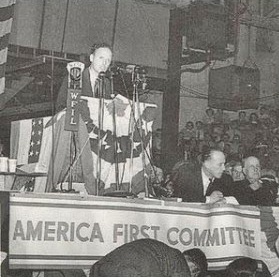
1941 – In a speech at an America First rally at the Des Moines Coliseum in Iowa, aviator Charles Lindbergh sparked charges of anti-Semitism when he blamed “the British, the Jewish and the Roosevelt administration” for trying to draw the United States into World War II.
“No person with a sense of the dignity of mankind can condone the persecution of the Jewish race in Germany. But no person of honesty and vision can look on their pro-war policy here today without seeing the dangers involved in such a policy both for us and for them. Instead of agitating for war, the Jewish groups in this country should be opposing it in every possible way for they will be among the first to feel its consequences. Their greatest danger to this country lies in their large ownership and influence in our motion pictures, our press, our radio and our government.”
Response to his speech was immediate and angry.
Time magazine ran an editorial blasting Lindbergh as a Nazi sympathizer.
“Last week freedom-loving U.S. citizens – heirs of Patrick Henry, Thomas Jefferson, Abraham Lincoln and a great host of heroes – had genuinely good reason to fear that Freedom might perish from their land.
For last week Charles Augustus Lindbergh and Gerald Prentice Nye cast aside all but the last veil of pretense and, in the pattern established by Adolf Hitler years ago, sought to make the Jews a public national issue in the U.S.”
President Roosevelt was even more direct – albeit privately. He told Treasury Secretary Henry Morgenthau, “If I should die tomorrow, I want you to know this, I am absolutely convinced Lindbergh is a Nazi.”
He also wrote to Secretary of War Henry Stimson: “When I read Lindbergh’s speech I felt that it could not have been better put if it had been written by Goebbels himself.”

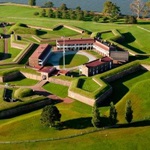
1941 – Construction on the Pentagon began – 60 years to the day before the terrorist attacks of 2001.
Requirements for the new building were that it be no more than five stories tall, and that it use a minimal amount of steel. The requirements meant that instead of rising vertically, the building would be sprawling over a large area.
With a square or rectangle shape ruled out, the building design was modified into a pentagon which was reminiscent of a 17th-century fortress or a “star fort” Civil War battlement, such as Fort McHenry (shown above).
The Pentagon included a five-acre central plaza, which was informally known as “ground zero” – a nickname originating during the Cold War on the presumption that it would be targeted by the Soviet Union at the outbreak of nuclear war.
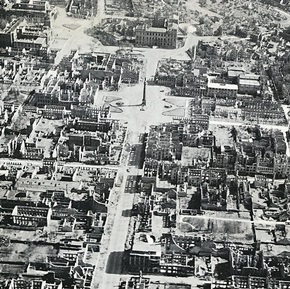
1944 – A Royal Air Force bombing raid on Darmstadt, Germany created a firestorm which had devastating results.
To create the firestorm, a number of incendiary bombs were dropped around the city before explosive blast bombs were dropped, thus beginning a self-sustaining combustion process in which winds generated by the fire ensured it continued to burn until everything possible has been consumed.
An estimated 12,500 of the inhabitants burned to death, and 70,000 were left homeless
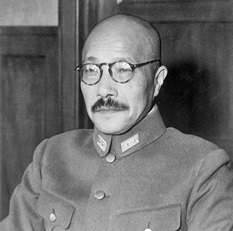
1945 – Hideki Tojo, Prime Minister of Japan during much of World War II, tried to avoid the gallows by attempting suicide.
After Japan’s unconditional surrender in 1945, General Douglas MacArthur ordered the arrest of forty alleged war criminals, including Tojo. As American soldiers surrounded Tojo’s house to serve the arrest warrant, he shot himself in the chest with a pistol but missed his heart.
Tojo was tried by the International Military Tribunal for the Far East for war crimes and found guilty of, among other things, waging wars of aggression; war in violation of international law; unprovoked or aggressive war against various nations; and ordering, authorizing, and permitting inhumane treatment of prisoners of war.
He was executed by hanging on December 23, 1948.
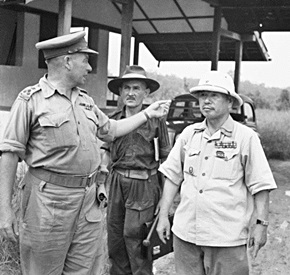
1945 – Australian 9th Division forces liberated the Japanese-run Batu Lintang camp, a POW and civilian internment camp on the island of Borneo.
On the date of liberation, the camp population was 2,024, of whom 1,392 were POWs, 395 were male civilian internees and 237 were civilian women and children.
Over 1,200 British POWs had already been executed during the camp’s three years of existence.
Among official Japanese papers found at the camp following its liberation were two “death orders”. Both described the proposed method of execution of every POW and internee in the camp.
The first order, scheduled for enactment on August 18, was not carried out; the second was scheduled to take place on September 15.
The timely liberation of the camp prevented the murder of over 2,000 men, women and children.
Lieutenant-Colonel Tatsuji Suga was the commander of all prisoner-of-war and civilian internment camps in Borneo. He is shown above formally surrendering to Brigadier Thomas Eastick.
The following day Suga, together with several of his officers were flown to the Australian base on Labuan, to await their trials as war criminals. Suga committed suicide there on the 16th of September. Other officers were later tried, found guilty and executed.
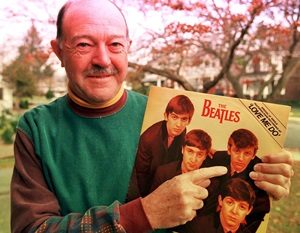
1962 – The Beatles recorded (for the third time) Love Me Do at EMI Studios in London.
Their first attempt was at their EMI audition on June 6, 1962, featuring Pete Best on drums.
They returned to the song during a September 4 session with Ringo Starr playing drums. The group tackled it again on September 11, after which it was deemed good enough for release as a single.
Although Ringo Starr had played drums on September 4, producer George Martin brought in a session drummer Andy White (pictured above) for the subsequent recording, and Starr was relegated to tambourine.
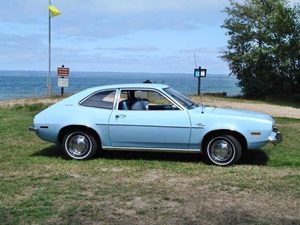
1970 – Ford introduced the Pinto under the tagline The Little Carefree Car.
That proved to be far from the truth.
1 / Less than two months after introduction, 26,000 Pintos were recalled to address a possible problem with the accelerator sticking on once engaged at more than halfway.
2 / On March 29, 1971, Ford recalled 220,000 Pintos to address a possible problem with fuel vapors in the engine air filter igniting by a backfire through the carburetor.
3 / The Pinto’s design positioned its fuel tank between the rear axle and the rear bumper. The Pinto’s vulnerability to fuel leakage and fire in a rear-end collision was exacerbated by reduced rear “crush space,” a lack of structural reinforcement in the rear, and an “essentially ornamental” rear bumper.
4 / On June 9, 1978, days before the National Highway Traffic Safety Administration was to issue Ford a formal recall order, Ford recalled 1.5 million Ford Pintos and Mercury Bobcats, the largest recall in automotive history at the time.
Ford finally cancelled production of the car in 1980.
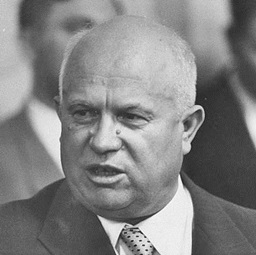
1971 – Former Soviet leader Nikita Khrushchev, one of the most significant figures of the Cold War, died at the age of 77.
The 1962 Cuban missile crisis was viewed as a terrible embarrassment for the Soviet Union. In 1964, Khrushchev’s opponents organized a political coup against him and he was forced into retirement.
The remainder of his life was rather solitary as he was forgotten by most and reviled by many in Russia.
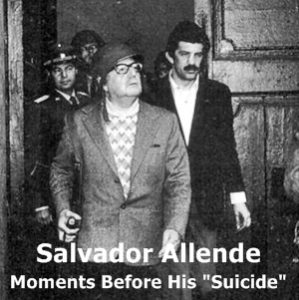
1973 – Chile’s armed forces staged a coup d’état against the government of President Salvador Allende.
He survived the attack but reportedly committed suicide – although many still believe he was murdered – as troops stormed the burning palace.

1976 – A group of Croatian nationalists planted a bomb in a coin locker at Grand Central Terminal.
After stating their political demands, they revealed the location and provided instructions for disarming the bomb. The disarming operation was not executed properly and the bomb exploded, killing Brian Murray, a NYPD bomb squad specialist.
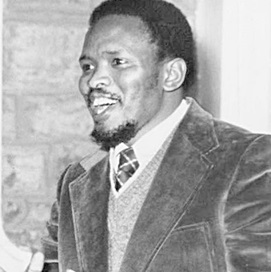
1977 – Steve Biko, leader of South Africa’s “Black Consciousness Movement,” was dumped, naked and shackled, on the floor of a police vehicle and driven 740 miles to Pretoria Central Prison.
How and why he was in that situation (and condition) still defies belief.
Biko and an associate had been arrested on August 18 and held prisoner under the 1967 Terrorism Act that allowed indefinite detention without trial for the purposes of interrogation in solitary confinement.
On the morning of September 6, Biko was being interrogated by five policemen when a “scuffle” erupted. Biko was beaten with a pipe, and thrown headfirst into a wall, after which he collapsed. The policemen then shackled Biko upright to a security gate with his arms spread out and his feet chained to the gate, in a crucifixion position. They left Biko chained to the gate and did not call for a doctor for 24 hours.
District surgeons employed by the government examined Biko on September 7. Despite evidence of neurological damage, the doctors did not record any external injuries.
When Biko’s condition did not improve and he lapsed into semi-consciousness, Dr. Benjamin Tucker recommended that Biko be sent to a hospital. On September 11, the security police transported Biko to Pretoria Central Prison (without any medical records).
Biko died the next day, shortly after his arrival in Pretoria.
An autopsy revealed an “extensive brain injury” had caused “centralization of the blood circulation to such an extent that there had been intravasal blood coagulation, acute kidney failure, and uremia”.
In announcing his death, South African authorities claimed Biko died after refusing food and water for a week in a hunger strike.
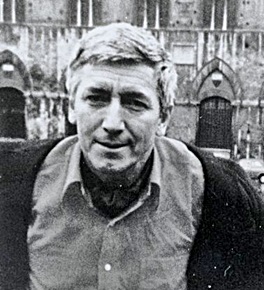
1978 – Writer and broadcaster Georgi Markov died four days after being poisoned.
Markov, a Bulgarian dissident writer working for the BBC World Service, was waiting for a bus in London when a micro-engineered pellet containing ricin was fired into his leg from an umbrella wielded by someone associated with the Bulgarian Secret Service.
No one was ever charged for his murder.
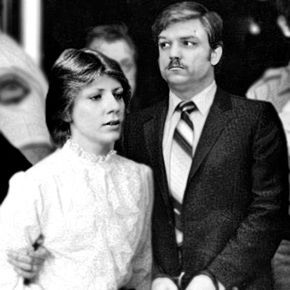
1978 – Gerald and Charlene Adelle Gallego began a two-year killing spree in Sacramento, CA. They killed a total of 10 victims, mostly teenagers they kept as sex slaves before killing them.
In 1984, Gerald Gallego was tried for murder in both California and Nevada (where several of the murders took place). In exchange for her testimony against Gerald, Charlene was not charged in California and she agreed to plead guilty to murder and received a sentence of sixteen years and eight months in Nevada.
Gerald was convicted in both states and sentenced to death in both of them, but he died in prison before his sentence could be carried out.
Charlene Gallego was released from prison in Nevada in July 1997.

1985 – Pete Rose broke Ty Cobb’s all-time hits record with his 4,192nd hit, a single to left-center field off San Diego Padres pitcher Eric Show.

1987 – Dan Rather, angered because CBS decided to shorten the CBS Evening News to broadcast the end of a U.S. Open tennis tournament, walked off the set and caused the network to “go black” for six minutes.
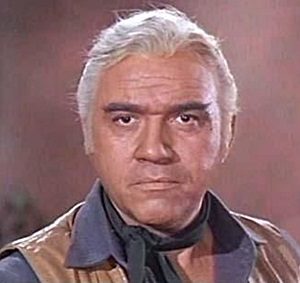
1987 – Actor Lorne Greene died from complications from pneumonia, following ulcer surgery. He was 72.
His notable television roles include Ben Cartwright on the western series Bonanza, and Commander Adama in the original science-fiction television series Battlestar Galactica.
In 1964, Greene had a #1 single on the music charts with his spoken-word ballad Ringo.
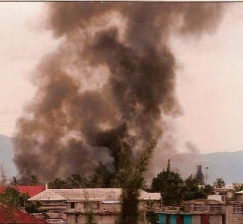
1988 – The Saint-Jean Bosco massacre took place in Haiti.
At the conclusion of a three-hour rampage on the Saint-Jean Bosco church packed with 1000 parishioners, the church was burned down thereby making it impossible to verify the total number of deaths.
The massacre was carried out without resistance by police or the army, despite the church being opposite a barracks. According to one witness, the police and army provided protection for the attackers encircling the church.
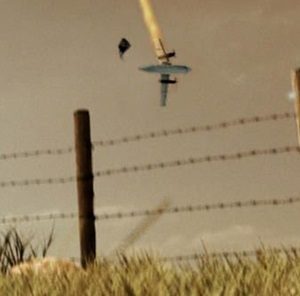
1991 – A Continental Express commuter plane bound for Houston crashed after breaking up in mid-air, killing 14 people. The aircraft wreckage hit an area near Eagle Lake, TX, located approximately 65 miles from its destination.
The Embraer EMB 120 Brasilia aircraft was scheduled for maintenance the afternoon before its scheduled 7 a.m. flight on this date. Short of workers, an inspector was drafted to assist the afternoon maintenance crew.
The inspector worked on putting the screws on the horizontal stabilizer but did not finish the job. When his shift was over, he told the foreman about the remaining screws but did not write it down, as proper procedure required.
The foreman failed to tell the workers on the late-night shift about the unfinished work; they saw the horizontal stabilizer in its correct position but did not notice that all the screws were not properly in place.
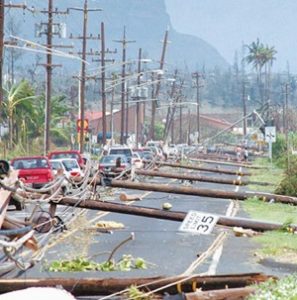
1992 – Hurricane Iniki, the most powerful hurricane to strike the state of Hawaii in recorded history, slammed into the island of Kauai with sustained winds of 145 miles per hour – and gusts as high as 225 mph.
Over 1,400 houses were destroyed and more than 5,000 more were severely damaged. The Central Pacific Hurricane Center failed to issue tropical cyclone warnings and watches 24 hours in advance, yet miraculously, only six deaths ensued.

1994 – Academy Award winning actress Jessica Tandy died at the age of 85 after a four-year battle with ovarian cancer.
She appeared in over 100 stage productions and more than 60 films. Her films included The Birds, The Gin Game, Cocoon and Fried Green Tomatoes. At the age of 80, she won the Academy Award for Best Actress for her role in Driving Miss Daisy.
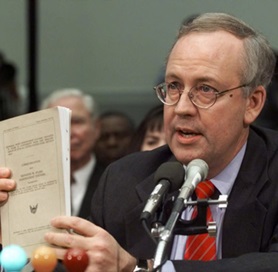
1998 – Independent counsel Kenneth Starr sent a report to the U.S. Congress accusing President Bill Clinton of 11 possible impeachable offenses.
The report offered graphic details of Clinton’s alleged sexual misconduct and leveled accusations of perjury and obstruction of justice.

2001 – In a series of coordinated suicide attacks by 19 members of the Islamic terrorist group al-Qaeda, the United States suffered the darkest day in its history.
Two hijacked aircraft crashed into the North and South towers, respectively, of the World Trade Center complex in New York City. Within an hour and 42 minutes, both 110-story towers collapsed, with debris and the resulting fires causing partial or complete collapse of other buildings in the World Trade Center complex, including the 47-story 7 World Trade Center tower, as well as significant damage to ten other large surrounding structures.
A third plane smashed into The Pentagon, while a fourth plane crashed in a field near Shanksville, Pennsylvania.
A total of 2,983 innocent people were killed.
President George W. Bush addressed the nation that evening.
“Today our fellow citizens, our way of life, our very freedom came under attack in a series of deliberate and deadly terrorist acts. The victims were in airplanes or in their offices: secretaries, business men and women, military and Federal workers, moms and dads, friends and neighbors. Thousands of lives were suddenly ended by evil, despicable acts of terror.”
Although al-Qaeda’s leader, Osama bin Laden, initially denied any involvement, he claimed responsibility in 2004 for the attacks, citing U.S. support of Israel, the presence of U.S. troops in Saudi Arabia, and sanctions against Iraq as motives.
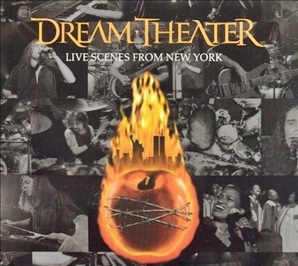
2001 – In what has to be the worst case of timing in music history, Dream Theater released their Live Scenes From New York album.
The cover artwork featured an apple (as in the Big Apple) on fire (notice the Twin Towers and the Statue of Liberty on top of the apple) and wrapped in barbed wire. The band quickly announced the album would be released with new artwork.
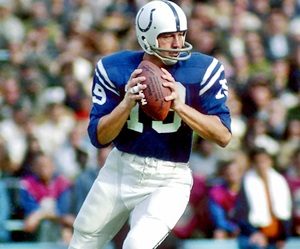
2002 – NFL Hall of Fame quarterback Johnny Unitas died from a heart attack at the age of 69.
Toward the end of his life, Unitas brought media attention to the many permanent physical disabilities that he and his fellow players suffered during their careers before heavy padding and other safety features became popular. Unitas himself lost almost total use of his right hand, with the middle finger and thumb noticeably disfigured from being repeatedly broken during games.

2003 – Actor John Ritter died following surgery to repair an aortic dissection. He was 54.
He was best known for playing the role of Jack Tripper on the ABC sitcom Three’s Company but is also remembered for his dramatic role in the film Sling Blade.

2011 – The National September 11 Memorial & Museum (also known as the 9/11 Memorial & Museum) was formally dedicated in New York City.
A dedication ceremony commemorating the tenth anniversary of the attacks was held at the Memorial – located at the World Trade Center site, the former location of the Twin Towers that were destroyed during the September 11 attacks – with presidents Barack Obama and George W. Bush, along with New York City mayors Michael Bloomberg and Rudy Giuliani – in attendance.
The Museum portion was dedicated on May 15, 2014.
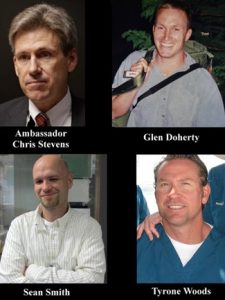
2012 – The U.S. consulate in Benghazi, Libya, was stormed, looted and burned down, resulting in the deaths of U.S. Ambassador J. Christopher Stevens and Information Officer Sean Smith.
Several hours later, a second assault targeted a different compound about one mile away, killing CIA contractors Glen Doherty and Tyrone Woods.
Initially, top U.S. officials and the media reported that the Benghazi attack was a spontaneous protest triggered by an anti-Muslim video, Innocence of Muslims. Subsequent investigations determined that there was no such protest and that the incident started as a premeditated attack that was quickly joined by rioters and looters.
On September 28 – 17 days after the attack – a spokesman for the Director of National Intelligence stated “As we learned more about the attack, we revised our initial assessment to reflect new information indicating that it was a deliberate and organized terrorist attack carried out by extremists.”
Compiled by Ray Lemire ©2005-2021 RayLemire.com / Streamingoldies.com. All Rights Reserved.